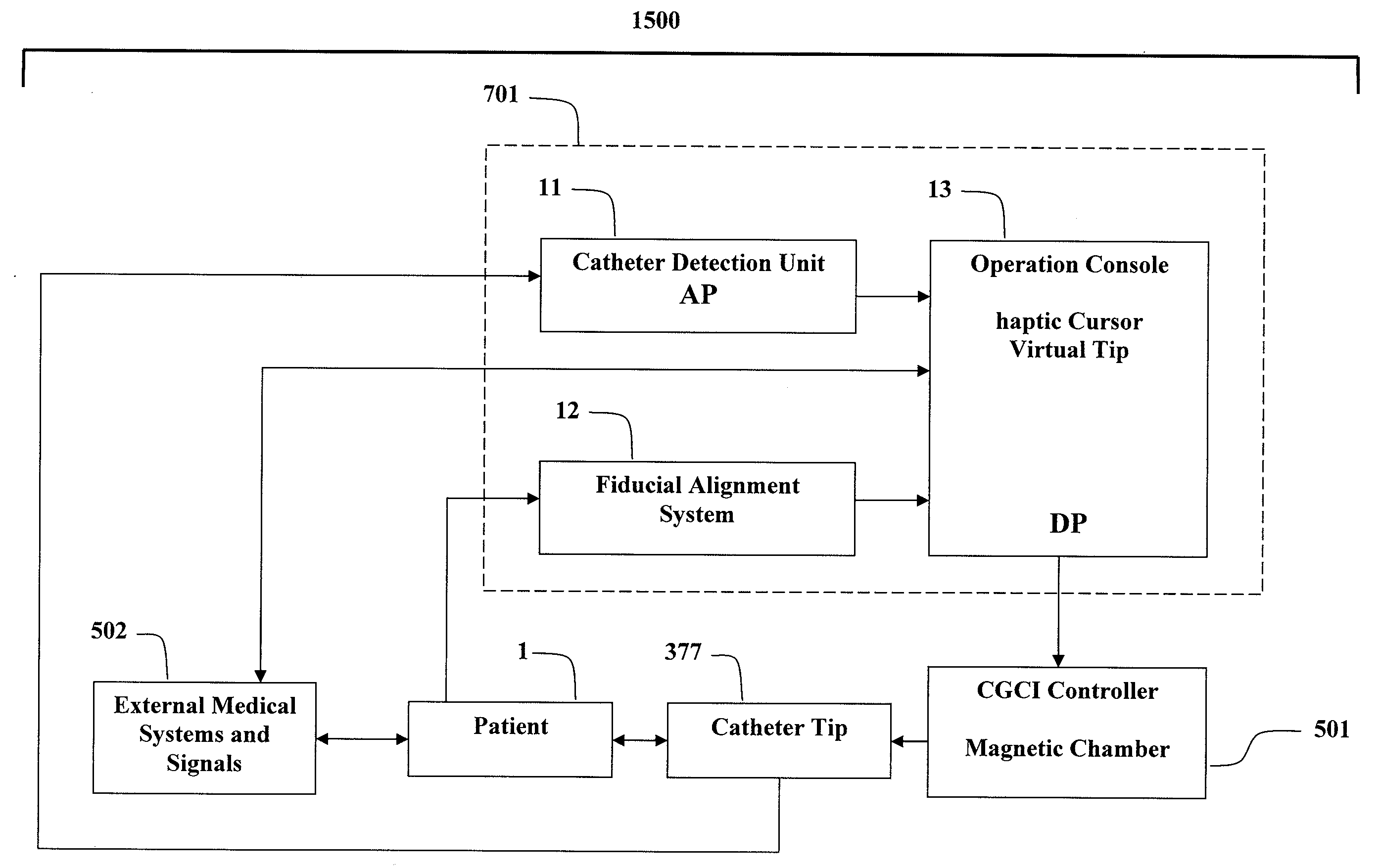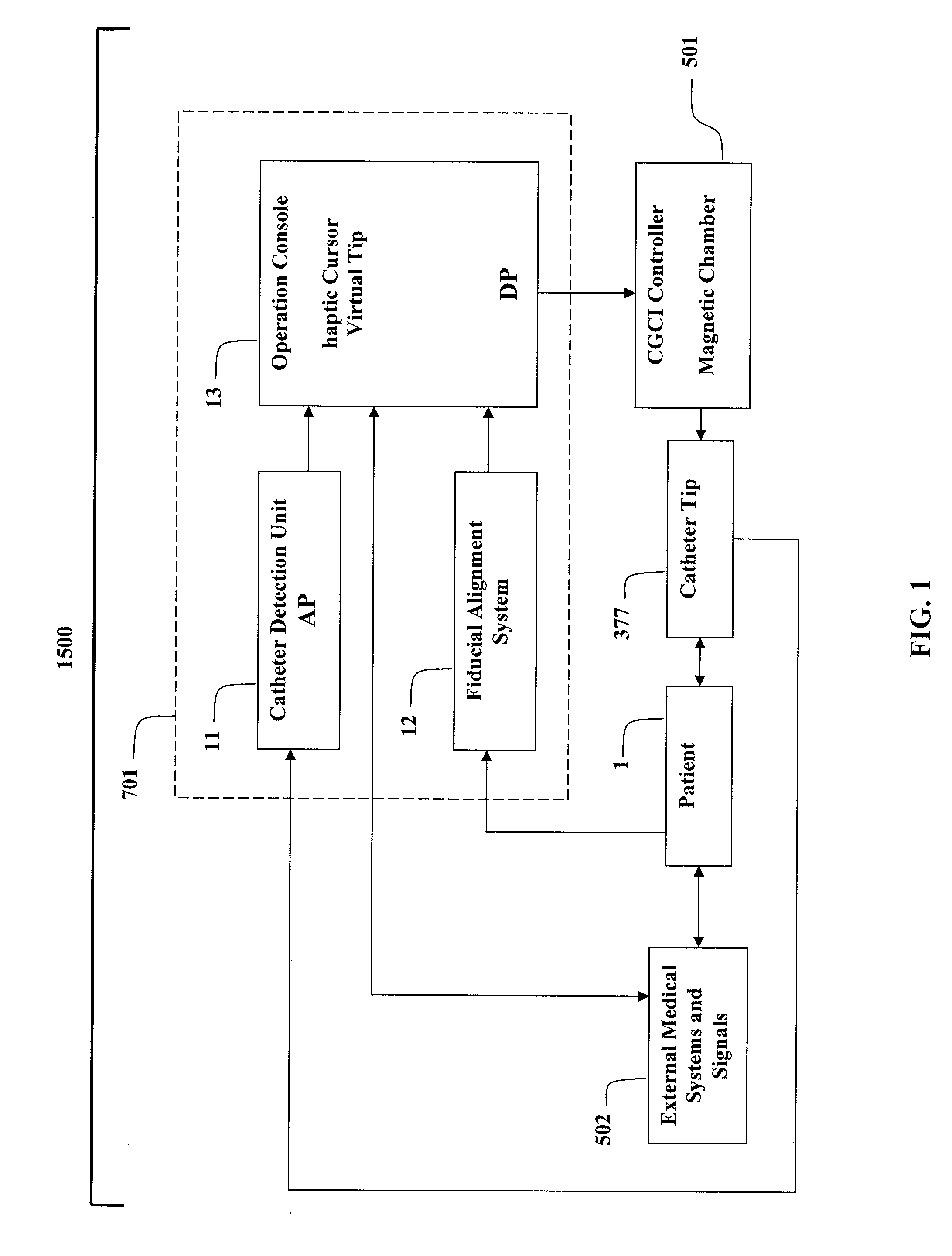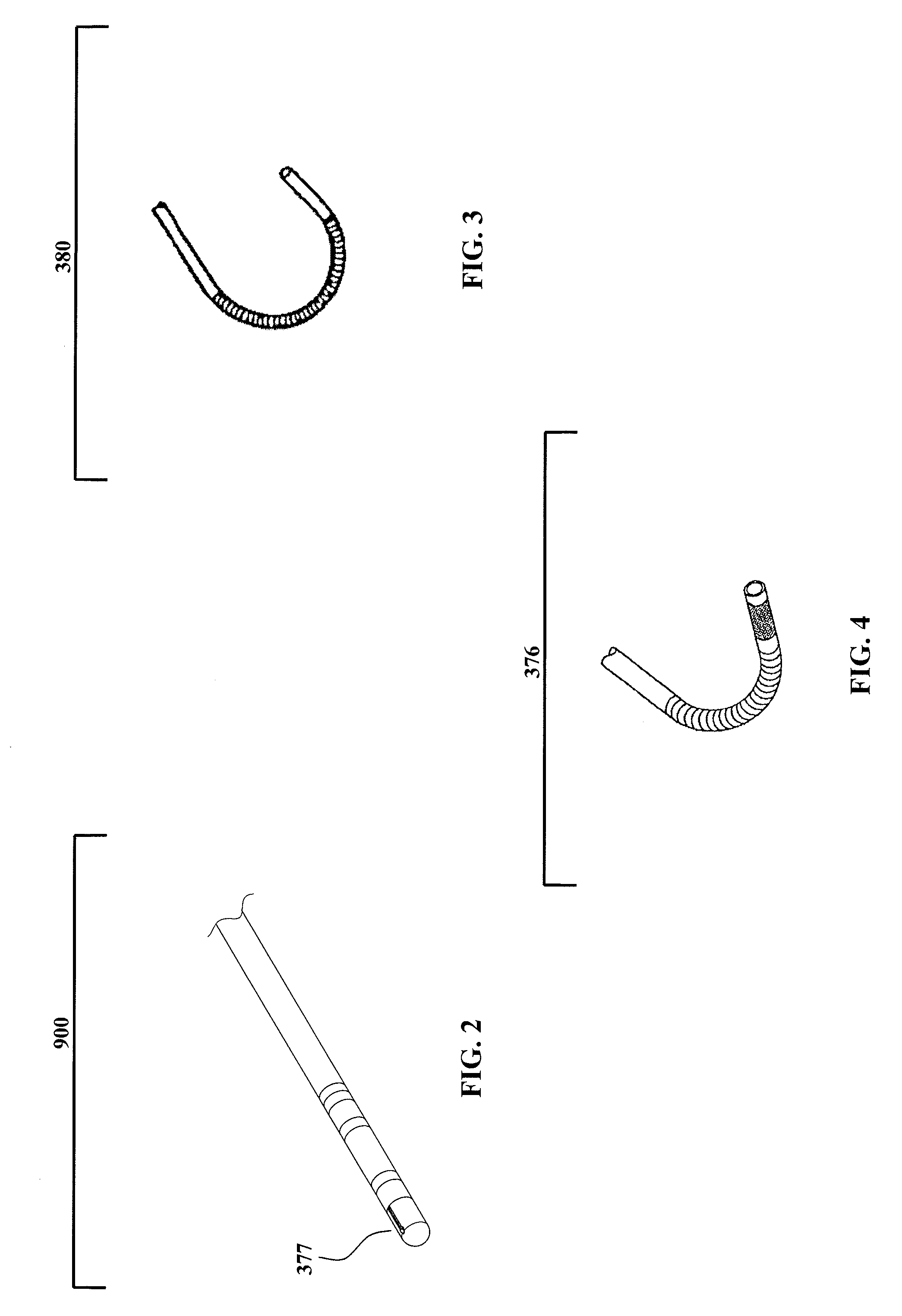Method and apparatus for controlling catheter positioning and orientation
a catheter and positioning technology, applied in the field of systems and methods for guiding, steering, and advancing an invasive medical device, can solve the problems of prior art solutions that cannot the substantial and unsatisfactory need for an apparatus and method, and the inability of prior art solutions to account for the global orientation of the catheter tip, etc., to achieve the effect of simplifying the surgeon's task
- Summary
- Abstract
- Description
- Claims
- Application Information
AI Technical Summary
Benefits of technology
Problems solved by technology
Method used
Image
Examples
Embodiment Construction
[0069]FIG. 1 is a block diagram of a CGCI unit 1500 what includes an imaging and synchronization unit 701, a catheter detection unit 11, a fiducial alignment system 12, and an operation console 13. In the CGCI Unit 1500, the operator navigates a magnetically tipped catheter 377 within a patient 1 using a six-degree of freedom haptic joystick 18 (shown in FIG. 9) while visualization of the progress of a virtual catheter tip 905 within the operation console's three dimensional virtual environment 13 as shown in FIG. 6. The catheter tip position detection system 11 provides the current position of the catheter tip or actual position (AP) 902, and the operator's position movement commands to move the catheter to a desired position (DP) 903 are sent to the catheter tip position control system or the CGCI controller 501 in FIG. 1.
[0070]Use of a magnetic chamber with an adaptive regulator, while using a joystick haptic device for operator control and method for detecting a magnetically tip...
PUM
 Login to View More
Login to View More Abstract
Description
Claims
Application Information
 Login to View More
Login to View More - R&D
- Intellectual Property
- Life Sciences
- Materials
- Tech Scout
- Unparalleled Data Quality
- Higher Quality Content
- 60% Fewer Hallucinations
Browse by: Latest US Patents, China's latest patents, Technical Efficacy Thesaurus, Application Domain, Technology Topic, Popular Technical Reports.
© 2025 PatSnap. All rights reserved.Legal|Privacy policy|Modern Slavery Act Transparency Statement|Sitemap|About US| Contact US: help@patsnap.com



